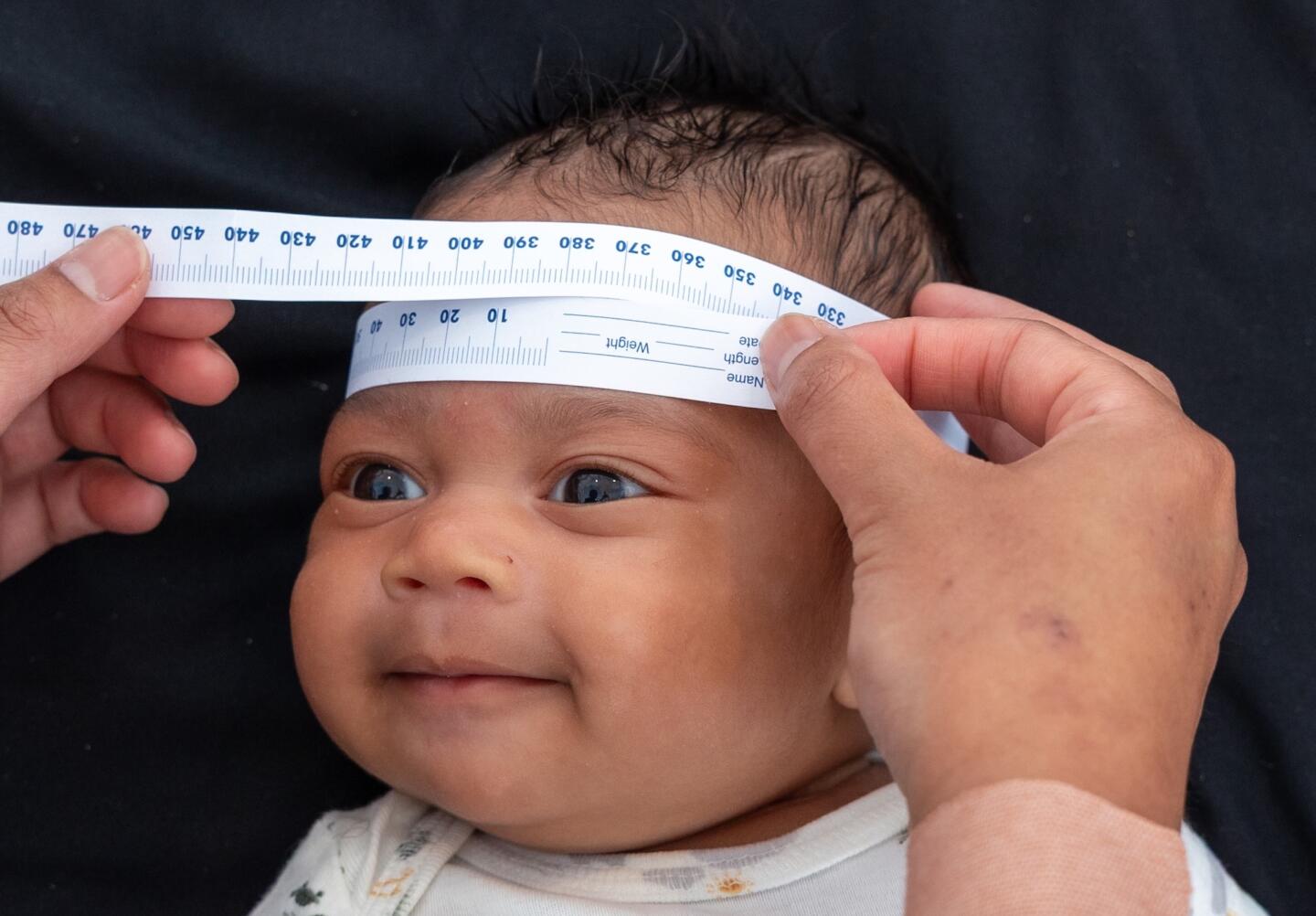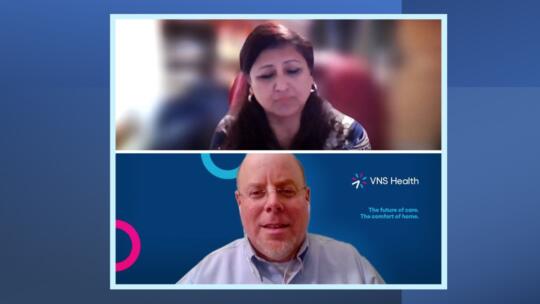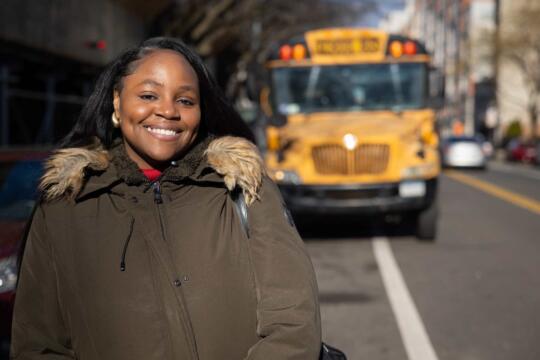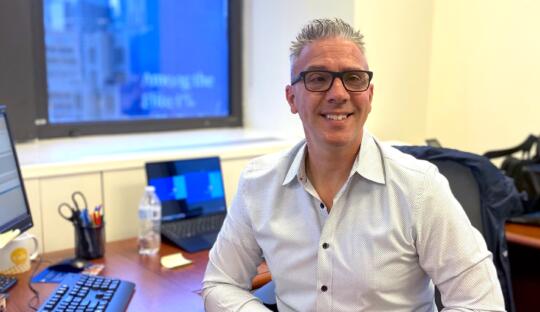From Pregnancy to Toddlerhood — A Day in the Life of NFP Nurse Nicole Grafilo
As part of our Nurses Month celebration, we’re spotlighting a day in the life of Nicole Grafilo, a nurse from our Bronx Nurse-Family Partnership (NFP) team.
The NFP pairs a first-time mother with a specially trained nurse, who then meets regularly with the mother from pregnancy through the child’s second birthday. (To learn more about our NFP, click here.) While the NFP may end its services at toddlerhood, the benefits will last a lifetime.

Nicole, who herself is a new mom of a 13-month-old, visits each of her clients approximately every two weeks, though her visits can be more frequent around the time of birth and less frequent as the child gets older.
Here’s a look at Nicole’s typical day, in Nicole’s own words. (For reasons of confidentiality, we’ve changed the names of the clients and their babies.)
7 a.m.
Our baby is usually up by seven, and my husband and I get him ready for the day. We get ourselves ready, too. Thankfully, my mom comes over to help us with childcare. Once the baby is with Grandma, I’m texting my manager to check in, and then I’m heading out into the field.
8:30 a.m.
I drive from Nyack, New York, over the Mario Cuomo Bridge, headed to the Bronx. I set up three or four visits a day. I like to group the visits close together by location so I’m not going from one end of the Bronx to the other in a single morning, but that’s not always possible!
9:30 a.m.

My first visit today is with the mom of a two-month-old boy whom I’ll call Kaido. I begin by following up on Kaido’s recent wellness visit, looking at the doctor’s notes and immunizations, seeing if Sharon, Kaido’s Mom, has any questions. Then Sharon and I do a tummy time session with Kaido—a session when you place a baby on their belly, awake and supervised, to help them develop their strength and motor skills. I gave Sharon an Eric Carle book, Brown Bear, Brown Bear, What Do You See?, and we discuss the importance of reading to the baby. She can show him pictures or just read the story—he loves to hear her voice. When Kaido gets bigger, Sharon doesn’t have to read word for word, just describe the pictures. Eventually he’s going to start turning the pages on his own, and Sharon can go at the child’s pace. It’s really just a matter of sitting together for story time, then building a routine around it—maybe a story before bed every night.
I take Kaido’s measurements as always, weight, height, head circumference. We talk about safe sleep, as I do in every home on every visit, as well as mom’s health, breast feeding, her support system, and any concerns she has.


11 a.m.
My next visit is with a mom of 15-month-old twins whom I’ll call Desiree. Sometimes, with multiples, the mom needs an extra set of hands. As long as everyone is good and healthy and safe, and there’s no other issue that needs to be addressed, I can just step into the space and help put one child in the high chair for lunch, or help with one who’s crying.

Lunchtime gives me a chance to talk about nutrition. Desiree says she knows the mac and cheese she’s feeding her twins isn’t the healthiest thing. I noticed that she was preparing fresh fish for dinner, so I let her know, “You can certainly offer them that later. Seafood is great for a balanced diet.” I always try to build health education into what the moms are doing at the time.


Before I became a nurse, I worked at a nonprofit that offered education around women’s health and reproductive health. I’ve always been interested in health education, and NFP allows me to combine this interest with my love of providing direct care.
12:30 p.m.
I head to our Bronx VNS Health office to pick up a crib, a pack n’ play, to deliver to my last client, who is pregnant with her first baby. We have access to a limited supply of cribs and other essential resources for families who are most in need. I grab the pack n’ play, grab lunch to eat in the car, and head back to the field.
3 p.m.

My last visit of the day is with Angela, who is pregnant. I deliver the pack n’ play, show her how to set it up, and use the opportunity to talk about safe infant sleep. I have pictures up on the computer of what safe sleep looks like: a baby alone on their back in a crib, no pillows or toys. Angela asks something a lot of new moms do—”It’s so firm, shouldn’t I get a softer mattress?” So I explain to Angela the importance of a firm, flat sleep space for the infant.
With pregnant moms, we check their blood pressure and weight at every visit. I follow up on her prenatal appointments to make sure everything’s going well and answer any questions about her pregnancy so far. We always ask about the signs and symptoms of preeclampsia and discuss pregnancy danger signs. We want to make sure that if she starts feeling unwell, she knows when to seek medical care. Before I go, Angela tells me, “I feel so much better after our visit.”
4:30 p.m.

I go home and complete the day’s paperwork for the rest of the afternoon, catching up on my emails and other case management needs. I am still rebuilding my caseload since returning from maternity leave, so on certain days, I also do outreach at the hospital to engage with patients who might be eligible for NFP.
6 p.m.
Once I finish my paperwork, I reconnect with my baby and get him fed. I love it if I’m able to get in a walk with him before the sun goes down. It’s been kind of amazing having a baby as an NFP nurse. I’ve picked up as much from all the moms as I’ve taught them from my background as a nurse. It’s been mutually beneficial. They have taught me so much about parenting. No matter what the moms’ situation may be, they are able to provide their child with safety, security and love—conditions that help their children thrive.
7 p.m.
The baby gets to sleep around seven, and then the evening is my own.


